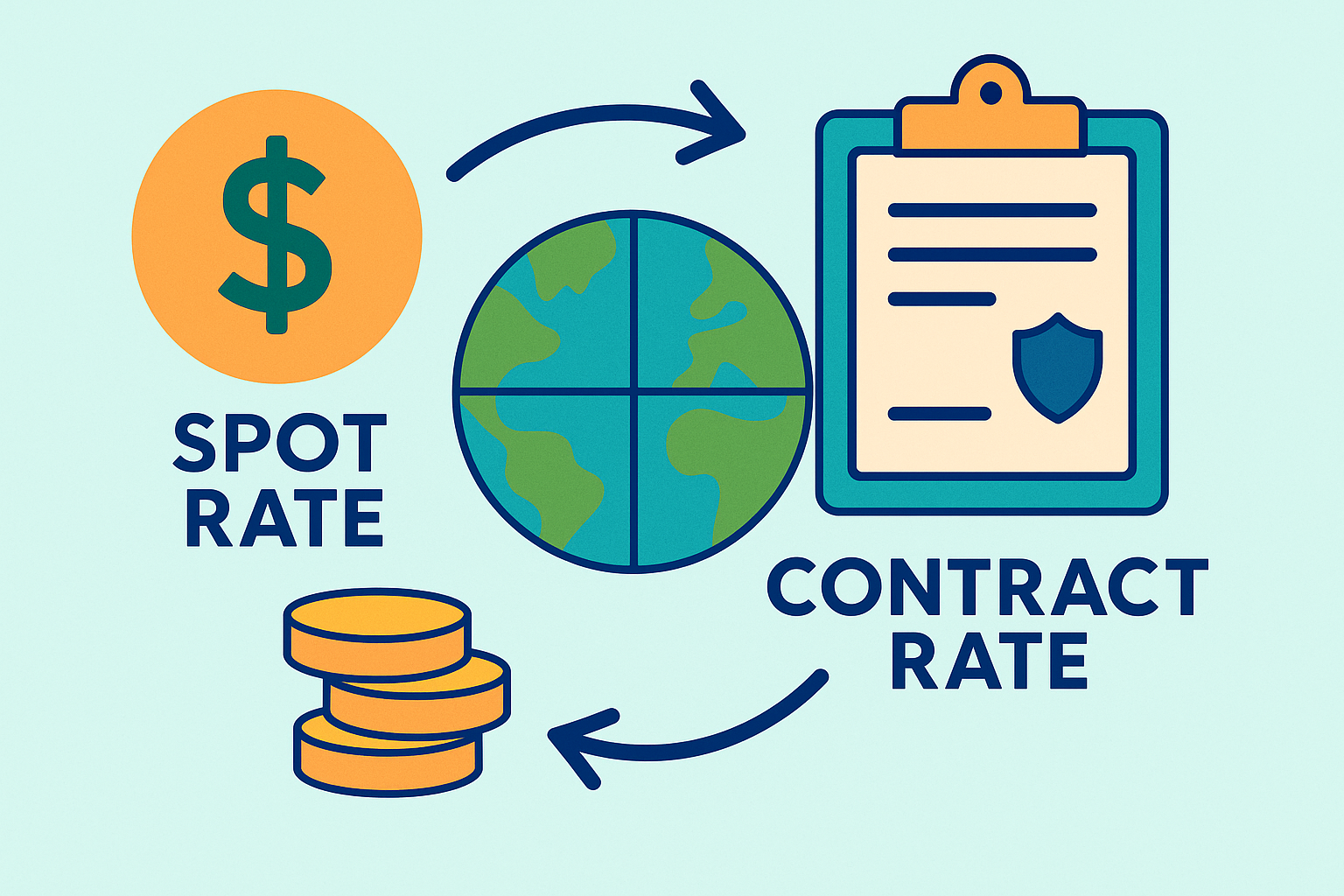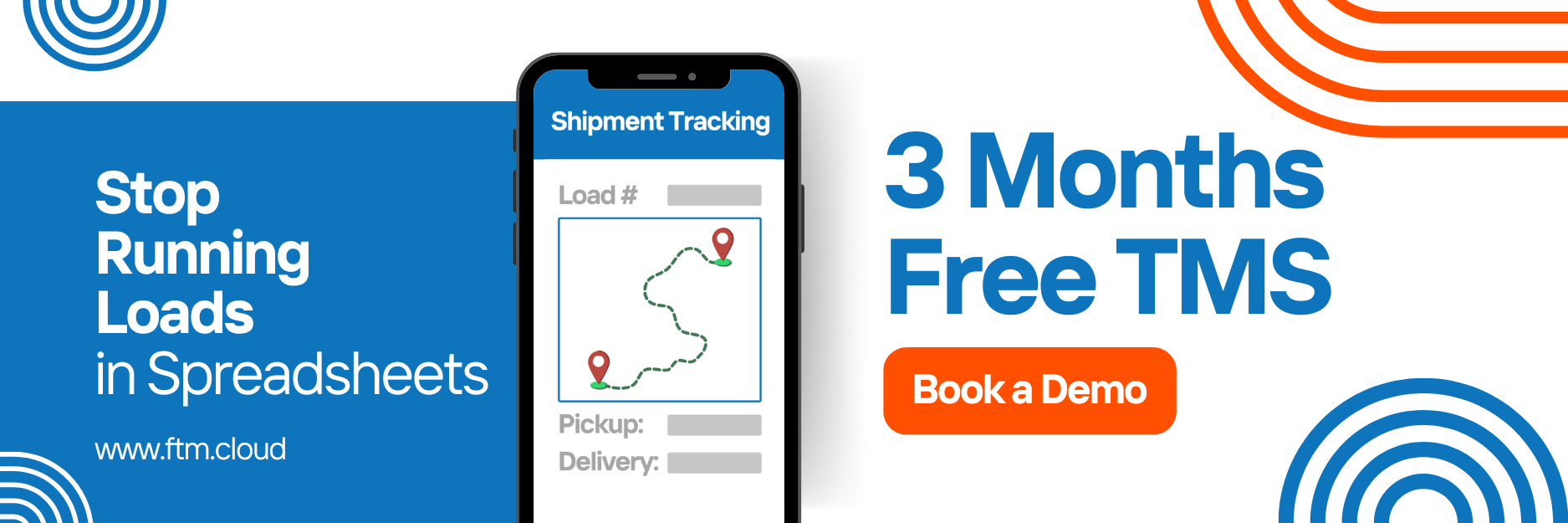In freight logistics, every dollar counts, but not every shipment is priced the same. One of the biggest strategic decisions shippers face is choosing between spot rates and contract rates. Both play essential roles in today’s volatile transportation market, yet their financial impact can differ dramatically depending on timing, volume, and global conditions. Understanding how each works can save shippers millions and shape long-term supply chain resilience.
Understanding the Basics: What Are Spot and Contract Rates?
A spot rate is a one-time price quoted for moving a specific shipment under current market conditions. Think of it like booking a last-minute flight, prices fluctuate based on demand, capacity, and season.
By contrast, a contract rate is negotiated in advance between a shipper and a carrier for a set period (often 6–12 months), offering rate stability and guaranteed capacity.
Both models can serve multinational shippers effectively, but the right choice depends on your network scale, shipping consistency, and risk tolerance.
The Pros and Cons of Spot Rate vs. Contract Rate
To find the best fit, let’s look at the trade-offs.
Spot Rate Advantages
- Flexibility: Ideal for ad-hoc or seasonal shipments.
- Speed: Quick access to available capacity, especially during disruptions.
- Market responsiveness: When fuel prices or demand drop, spot rates can be cheaper.
Spot Rate Disadvantages
- Volatility: Prices can skyrocket during capacity shortages or peak seasons.
- Limited loyalty: Carriers may prioritize contract customers during high demand.
- Budget unpredictability: Hard to forecast transportation spend.
Contract Rate Advantages
- Predictability: Fixed pricing helps stabilize budgets.
- Priority capacity: Carriers reserve space for contract customers.
- Stronger relationships: Builds trust and consistency between shipper and carrier.
Contract Rate Disadvantages
- Less flexibility: Hard to pivot when market rates fall.
- Volume commitments: Requires steady shipment flow to stay cost-effective.
- Lag in market alignment: Rates may not reflect real-time shifts.
When Spot Rates Win
Spot rates shine when the market is soft, that is, when truck supply exceeds demand. During post-peak freight cycles or off-seasons, shippers can capitalize on lower prices without being tied to long-term commitments.
Additionally, spot freight offers agility in cross-border or multi-modal scenarios, allowing large logistics networks to pivot based on customs delays, trade restrictions, or fuel surges.
For example, if you’re shipping from Mexico to Canada through the U.S., spot freight gives you flexibility to reroute or reprice lanes quickly, protecting your margins from sudden disruptions.

When Contract Rates Pay Off
Contract rates tend to outperform during tight capacity markets, trade wars, or high fuel costs. For large multinational shippers, the ability to forecast logistics costs across multiple regions (North America, Europe, and Asia) is invaluable.
Predictable pricing means better procurement planning, fewer invoice disputes, and stronger carrier partnerships.
Furthermore, with digital TMS freight platforms like FTM’s TMS logistics solutions, shippers can track contract performance, automate lane reviews, and identify when to renegotiate terms for better savings.
The Smart Play: A Hybrid Strategy
The best strategy often blends both models. Many enterprises now use data-driven TMS systems to dynamically switch between spot and contract rates based on real-time analytics.
For instance, AI-based predictive tools in platforms like FTM’s TMS transport system can automatically select the lowest total cost option per shipment, factoring in detention, fuel, and route optimization.
This hybrid model ensures cost efficiency while preserving reliability. It’s not about choosing one or the other, it’s about choosing both intelligently.
Outsmarting Market Volatility with TMS Integration
Modern logistics no longer relies on spreadsheets or guesswork. Integrating your rate strategy within a TMS cloud platform enables visibility across contracts, spot bookings, and performance analytics, all in real time.
You can compare spot trends, evaluate carrier performance, and even simulate market shifts. This level of insight helps multinational shippers anticipate tariff changes, capacity swings, or global trade disruptions before they affect cost.
For a deeper dive into market rate dynamics, explore: Spot vs. Contracted Rates
The Rate That Truly Saves
Ultimately, the debate between spot rate vs. contract rate isn’t about picking sides, it’s about understanding timing, data, and leverage.
Contract rates build resilience; spot rates deliver agility. Together, they form a smarter logistics ecosystem that saves not just money, but also time, predictability, and relationships.
Ready to optimize your freight strategy?
Partner with FTM and gain real-time visibility, automated optimization, and better rate control across your entire supply chain.
Contact us today to get started.


Love the point about using a hybrid strategy — not “pick one,” but dynamically switch based on market signals, costs, and volume.